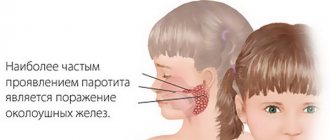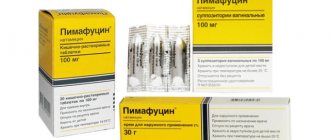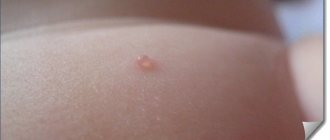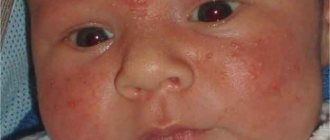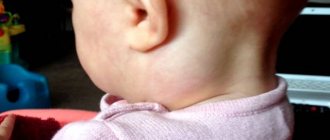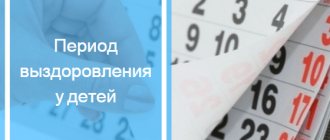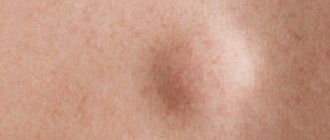Mastitis is an inflammatory process in the breasts that can occur in any woman. The main category of patients are young mothers who are breastfeeding. In their case, the disease usually appears as a complication of lactostasis - blockage of the milk ducts. Mastitis requires mandatory treatment, as it affects the patient’s quality of life and can lead to further complications.
Now let's look at this in more detail.
What is "mastitis"?
Lactation mastitis is an inflammation of the mammary glands that occurs during breastfeeding. Against the background of inflammation, infection is involved in the process, so mastitis requires mandatory treatment.
Feeding a child is allowed only with non-infectious mastitis. In this case, breastfeeding, on the contrary, helps clean the ducts and free the mammary glands from accumulated milk. If you experience severe chest pain, difficulty pumping, or a deterioration in your general condition, you should definitely consult a doctor. Only a specialist can distinguish lactostasis from non-infectious or infectious mastitis.
For infectious mastitis, the entry point for infection is often microcracks on the mother’s nipples. Less commonly, the pathogen penetrates from other infected foci in the body - the oral cavity, maxillary sinuses and others.
Non-infectious mastitis develops in the absence of timely treatment of lactostasis. The temperature can rise to very high numbers, and the affected area is very painful. If the pathogen enters, a change in the color of the milk becomes noticeable, and between feedings, pus may be released from the nipple.
The stages of development of pathology are as follows:
- A woman experiences a blockage of the milk duct with a plug, which leads to stagnation of milk in one of the lobes of the gland. At this stage, a woman experiences lactostasis. If you can express a little milk from the problem area, temporary pain relief occurs.
- Excessive milk supply and compression of the gland provoke an inflammatory process. At this stage, non-infectious serous mastitis develops. Expressing does not bring relief, the woman’s general condition is impaired.
- Inflammation enters the infiltrative stage and spreads to adjacent areas of the mammary gland. Painful, hot and large lumps appear in the chest.
- Infection through the bloodstream or through the nipple into the milk ducts provokes the development of purulent mastitis. This is a very dangerous condition that causes severe symptoms and requires immediate help.
What mastitis looks like in a nursing mother with photos
External manifestations may appear already at the stage of lactostasis. Stagnation of milk and the inflammatory process lead to swelling of the affected area and an increase in the size of the gland. Later, redness and hyperemia are added, which a woman can easily notice on her own. Photos of what mastitis looks like are shown below:
The first signs of mastitis in a nursing mother
Initial manifestations are often limited to local symptoms. A woman may feel a sharp pain in her breasts, which is then replaced by a feeling of heaviness and pressure due to excess milk. At first, the stagnant ball is barely palpable, but the process can progress quite quickly. The sooner a woman understands what the problem is and begins treatment, the easier it will be to stop this process.
Symptoms of mastitis in a nursing mother
The disease often begins suddenly or develops after lactostasis for 2-3 days. At the first stage, the woman feels well, but experiences some local discomfort. At the site of stagnation, pain appears, which is clearly expressed when pressure is applied. The general temperature, as a rule, is not increased.
The next day, inflammation appears and the breasts become swollen. A woman may notice that the veins on her chest are prominent and that the affected area is larger than normal. The pain does not stop, and relief does not come even after feeding the child. At this stage, the temperature in the armpits may differ - higher values will be on the affected side.
A day later, the patient’s condition worsens again. There is a significant increase in general temperature, chills, weakness, and increased pain. Then the seals increase and reach several centimeters in size. Now they are easily palpable and cause constant pain to the patient. Body temperature can fluctuate from very high to normal.
Pathogenic flora is involved in the inflammatory process. Its reproduction is accompanied by symptoms of intoxication - chills, fever, nausea, vomiting. The woman’s health is very poor and she is unable to care for the child. At this stage, only antibacterial therapy will help eliminate mastitis; breastfeeding will have to be stopped.
Help with breast mastitis at home
If the baby does not empty the breast completely, it needs to be expressed. This will help prevent the emergence of new pockets of stagnation. After feeding or pumping, place a heating pad with ice on the breast, after wrapping it in several layers of cloth. A light massage will help ease the flow of milk for a nursing woman. Additionally, ointments and creams with an anti-inflammatory effect can be applied to the sore breast:
- Vishnevsky ointment - penetrates deep into tissues, relieves inflammation;
- ichthyol ointment – eliminates congestion, swelling, pain;
- Levomekol – has an antimicrobial effect, promotes tissue restoration.
Breast massage for milk stagnation
It is best to carry out the procedure after feeding the baby. Massage movements should be soft and gentle. Do not put too much pressure on the mammary gland. You should move from the outside of the breast to the nipple. A nursing mother needs to massage the lumps especially carefully. The massage technique for mastitis is as follows:
- Use four fingers to press on the upper chest.
- Make 2-3 circular movements.
- Performing circular movements, reach the lower chest.
- Move up again.
- Stroke the breast from the base to the nipple around the entire circumference.
- Take the nipple with your thumb and forefinger, twist it, and pull lightly.
Traditional methods of treating mastitis in a nursing mother
It is advisable to use such methods as additional assistance. Traditional treatment of mastitis cannot be replaced with an alternative one. This can result in suppuration of the breast tissue. The following remedies will help alleviate the condition of a nursing woman:
- Cabbage leaf. Place the washed leaves on your chest. Leave it on all day. Change as needed. Apply cabbage leaf to mastitis until the condition improves.
- Washing the chest with infusion of chamomile and yarrow. Take herbs in a ratio of 1:4. 2 tbsp. l. pour 500 ml of hot water into the mixture. Leave for an hour. Strain before use. Wash your breasts after each feeding until the mastitis goes away.
- Mint compress. Steam dry peppermint leaves with boiling water. Cool and wrap in clean gauze. Place on mastitis-affected breasts for 20 minutes. Repeat the procedure 2-3 times a day. Treat for a week.
Causes and prevention of mastitis in a nursing mother
The main reasons that can lead to postpartum mastitis:
- Micro cracks in the nipples. This occurs especially often in primiparous women, when the delicate skin of the nipples is not ready for breastfeeding. Damage provokes an inflammatory process and also becomes a gateway for infection.
- Postpartum changes in the body. They imply a sharp hormonal change and a decrease in the body's defenses.
- Failure to comply with hygiene standards in the breast area - you need to shower every day, touching the mammary glands with dirty hands is strictly forbidden.
- Lactostasis. Stale milk is a good breeding ground for the development of pathogenic microorganisms. Once in the milk ducts, the pathogen begins to actively develop, and mastitis becomes infectious.
- Hypothermia.
Paying close attention to your health will help prevent mastitis. Take proper care of your breasts and pay attention to the slightest changes in how you feel. Recommendations for the prevention of mastitis will be the following:
- Breastfeeding is a natural physiological process during which a woman should not experience pain or other unpleasant sensations. If you have any discomfort during or between feedings, tell your doctor.
- Take care of your breast health - take a warm or cool shower, do simple exercise. Remember that a woman’s nipples have a special protective film that is safe for the baby and at the same time prevents infection from entering the milk ducts. Leave it on and do not wash your breasts before each feeding.
- Do breast massage. This will help prevent congestion, dilate the ducts and improve blood circulation.
- Read the literature on how to properly attach your baby to the breast. By following simple rules, you will automatically protect yourself from mastitis.
- Change and wash your bra often. Drops of milk that fall on it come into contact with the external environment and are a good environment for the proliferation of microbes.
- Avoid abrasions or cracked nipples. If feeding is painful, then a small amount of milk or wound-healing ointments can be applied to the affected areas.
Can ointments be used?
Various pseudo-medical sources often contain recommendations to use certain ointments for mastitis. In fact, their effectiveness is extremely low, since they do not affect the main cause of the disease - the microbe, and have an extremely insignificant effect on lactostasis. Some of the ointments can even cause harm. Here's a quick summary:
- Vishnevsky ointment. It is extremely undesirable for use, as it very quickly transforms non-purulent forms of mastitis into purulent ones. It has no therapeutic effect of its own and is not currently used in surgery. This also includes ichthyol ointment.
- Traumeel S. A homeopathic preparation containing microscopic quantities of various kinds of plants. The manufacturer recommends its use for various traumatological and orthopedic diseases. There is not a word about mastitis in the instructions.
- Arnica ointment. It is also used only in traumatology and orthopedics for the resorption of bruises and hematomas.
- Levomekol ointment. Can be used for mastitis, but only after surgery with opening of the abscess. In non-purulent forms of the disease it is ineffective.
- Progestogel ointment. Containing estrogen, this drug is contraindicated during breastfeeding. Under no circumstances should it be used at home independently, without a doctor’s prescription. If you are mistaken and you do not have mastitis, but, for example, fibrocystic mastopathy with the formation of nodes, you will harm yourself by worsening the course of the disease.
Pashkova Alla Valerievna
Obstetrician-gynecologist, candidate of medical sciences.
Ask a Question
In a word, treatment with ointments can and most likely will be ineffective. Only antibiotics plus surgery for purulent forms can save a woman from mastitis.
